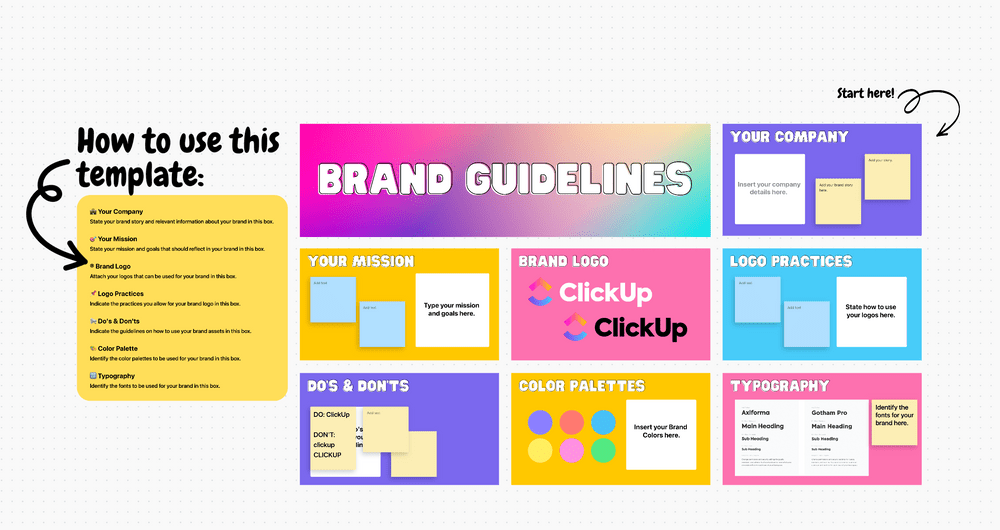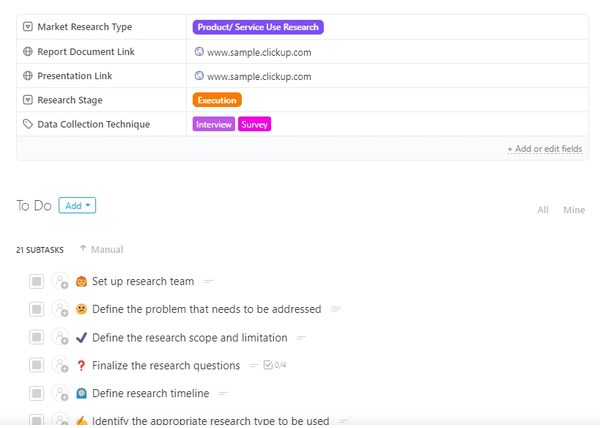Gain Competitive Advantage with Successful Product Differentiation: Types, Benefits, and Strategies

Sorry, there were no results found for “”
Sorry, there were no results found for “”
Sorry, there were no results found for “”
Why does a customer pick a particular product in a competitive market—is it their personal preference or the marketing strategy that conditioned the buyer’s choice? This question becomes even more critical when you know that 95% of products launched each year fail to take off.
Rising above the competition isn’t just about having a higher quality product anymore; it also involves implementing a product differentiation strategy. It requires product managers to work on areas like brand awareness, innovation, and positioning to create a distinct image for their product that woos prospective customers. 😍
In this guide, we’ll explore product differentiation and its role in helping businesses boost a product’s perceived quality in a target market saturated with similar offerings. We’ll cover:
Product differentiation is a business strategy for setting a product apart from comparable alternatives in the market. It’s essential in a market with a monopolistic competition structure where products of the same features and class compete for the buyer’s attention.
With product differentiation, you can enhance a product’s unique selling proposition (USP), perceived quality, and/or functional features to provide that extra value that makes it more desirable. The idea is to leverage the subjective preference of customers in favor of your product.
Let’s grasp this better with an example: Why do you choose your favorite restaurant over others offering the same cuisine?
As a customer, you’d compare the unique qualities of your options before making a choice. That’s precisely what successful product differentiation leads to—winning over the customer by asserting: Here’s why you should choose us over others! Whatever answer you have can be your differentiation strategy.
Failing to differentiate products can have grave consequences, such as:
Tip: You can now beat your market competition by carving out product differentiation strategies faster. Use the ClickUp Product Positioning Template to take control of your brand’s narrative. Its preset structure lets you map out your product’s vision and unique selling points for target markets from a single, customizable page. You can also enjoy ClickUp’s built-in features for ideation, data organization, and task tracking. 🎉

There are three functional aspects to customizing a product differentiation strategy:
How will you market your product or service as unique within a customer segment? To stand out in a sea of generic products, you can gain a competitive advantage through practical angles like:
Effective differentiation goes hand-in-hand with creative brand management. The right messaging not only attracts attention but fosters brand loyalty among existing customers. Consider:
Brand management software (like ClickUp) typically helps create captivating brand stories and messages that help push the idea of purchasing your product from a more subjective standpoint.
Template to try: ClickUp Brand Guidelines Whiteboard Template!

Strong differentiation often involves tailoring your product to the specific needs and preferences of your target audience. Typical purchase decisions tend to favor components like:
There are three major benefits of achieving product differentiation in any industry:
Product differentiation allows you to surpass price-based competition and even command premium price points. Over time, you enjoy a significant profit margin, which can be translated into:
Besides attracting new customers, differentiation also helps with retaining your existing ones. When a customer truly connects with your product or finds unwavering value in areas like customer service or consistent availability, they are less likely to switch brands.
Building on the previous point, even simple product differentiation techniques can open doors to new market segments. For example, consider Ozempic—this diabetes care drug witnessed a massive spike in sales in 2023 after customers discovered its (debated) use for weight loss.
There are three primary types of differentiation strategies in product management. Read quick summaries of each below:
Vertical product differentiation is the measurable distinction based on tangible factors like flavor, functionality, and design. Here are some real-world examples of vertical differentiation:
Under horizontal product differentiation, products are distinguished by intangible quality markers. Products in this category have the same functional aspects at a comparable price point. The prevailing theme is that if all options were priced identically, a clear “winner” would emerge in terms of quality perception.
Horizontal product differentiation is often seen in brand-heavy markets. Here are a few examples:
Template to try: The ClickUp Product Pricing Template lets you ideate and visualize pricing strategies based on market data.
Mixed differentiation is a blend of vertical and horizontal differentiation. Here, purchase decisions are influenced by both qualitative and quantitative factors.
For example, consider an electronics consumer looking to buy a TV. For them, the major factors influencing their buying decision will be the picture quality (horizontal differentiation) that fits their budget (vertical differentiation).
Another instance is when a person shops for a savings account. They’ll consider intangible factors like a bank’s service reliability as well as tangible factors like interest rates and annual fees.
Here are three tried-and-tested steps to tailor your product differentiation and marketing strategy:
Understanding industry factors is paramount to creating a differentiated product that resonates with consumers. Naturally, the first step is identifying the key factors driving competition within your industry.
Industry leaders typically focus on three brainstorming actions during this stage:
Expedite this step by conducting focus group interviews and market-wide surveys to gather insights into customer needs, wants, and preferences. Try the ClickUp Product Feedback Template to collect actionable customer input for your specific product.
You should also review competitor products, pricing strategies, and customer feedback to find differentiation opportunities.
After your research phase, work to define your unique selling proposition and product qualities that can sway your target audience. Here’s how you can effectively do so:
Adding a personal touch to your marketing, purchase, and customer support chains can enhance brand loyalty. Here are some tips to incorporate personalization:
For startups with lean value chains, solutions like networking and direct customer interactions become pivotal in establishing a foothold in the industry.
Product differentiation is one of the best ways to dominate a competitive market. However, you can’t outpace competitors without the right tools to plan your strategies and monitor marketing efforts.
That’s where ClickUp comes in. It’s a free project management solution with a versatile feature set to organize market research, develop product-related strategies, and keep an eye on competitors, all under one roof! ✨
Let’s explore some of ClickUp’s product- and marketing-focused features below.
ClickUp’s Product Management Suite lets you visualize your product roadmap and synchronize your teams’ product development or differentiation efforts.
Use the suite to create easy-to-understand product workflows and keep all epics, user stories, and tasks in one place. But if you’re in the brainstorming phase, use ClickUp Whiteboards to evaluate all kinds of product differentiation ideas. The infinite canvas offers built-in tools like sticky notes and connectors to help teams ideate in real time.
The platform has a number of ready-made Whiteboard templates for different brainstorming needs. For instance, the ClickUp Competitive Analysis Template gives you a comprehensive view to assess the position of your competitors. With four color-coded quadrants to depict the category of competitors (Contenders, Leaders, Niche, and High Performers), you can easily identify both vertical and horizontal differentiation opportunities.

You can also use this template to identify products that aren’t gaining enough traction or not satisfying customer intent and shape smarter differentiation strategies.
You can leverage the Market Research Template and find opportunities for horizontal and vertical differentiation faster. With 20+ pre-built subtasks, you don’t have to spend hours creating a workflow. Simply set the priority and due date, and start assigning tasks to your research team.

And if you want to identify your specific strengths and weaknesses, you can choose from a selection of ClickUp SWOT analysis templates.
If product differentiation is your company’s current goal, use ClickUp Goals to turn rough business OKRs into actionable goals. Set specific targets and Milestones to monitor the health of your differentiation initiatives.

Got multiple products? Keep individual goals sorted in different Folders within your ClickUp Workspace.
You also have the option to check all reports, metrics, and priorities revolving around a product under one Dashboard. Plus, native Automations and Integrations (with tools like Slack, Zoom, and Microsoft Teams) enable you to reduce administrative work and expedite product management tasks from a single platform. ⚡

From handling multi-channel campaigns to running large-scale branding events, the ClickUp Marketing Suite streamlines your team’s marketing efforts. For example, when you leverage its 15+ views, you can monitor your campaign tasks in any way you prefer. Our favorites include:
Switch between any view instantly and check tasks depending on priority or due dates. Once again, you can rely on Whiteboards to brainstorm product launches, revamps, and resource management before campaigns. Easily connect ideas by dragging or dropping them, and create tasks for your marketing team simultaneously.
Speaking of marketing workflows for different customer segments, use ClickUp’s native AI tool (ClickUp Brain) to save time on everyday tasks. Leverage 100+ industry-specific prompts for generating product documentation, summarizing research plans, and drafting customer emails. You can also use it to find information and tasks from ongoing projects and automate action items.

Organize all your marketing strategies, action plans, and roadmaps in ClickUp Docs and have your teams collaborate in real time.
Don’t want to create documents from scratch? Make use of brand guidelines, social media, and other marketing-friendly templates to create stellar manuals and ensure your differentiation strategy is a success.

Contrary to popular belief, product differentiation isn’t the exclusive duty of marketing and product teams. If anything, they mainly lead product positioning and serve as the initial point of contact for customers or prospects.
Here’s how other teams/individuals can play their part in facilitating product differentiation strategies:
Guess what? ClickUp has dedicated feature suites for almost every functional unit of a team, whether it’s customer support or software development. Sign up for free today, onboard your teams, and start putting your product differentiation strategies into action. 💰
Today’s competitive markets have made product differentiation not just a perk but a necessity. The story doesn’t end here, though. To stay ahead of the curve, we must embrace continuous innovation and product differentiation. Here are two strategies you can consider:
Businesses that integrate advanced tech into their products gain a distinct edge. Think AI-powered personalization, predictive insights, immersive VR/AR experiences, and blockchain for secure transactions—all adding layers of value that competitors struggle to match.
By staying at the forefront of innovation, companies can not only stand out but jump ahead in the race for customer loyalty and market share.
Social responsibility emerges as a powerful business differentiator. Research from McKinsey and NielsenIQ reveals that over 60% of consumers are willing to pay a premium for products packaged sustainably.
The same research shows that products with ESG (environmental, social, and governance) claims exhibit higher sales growth and command an 8% higher growth rate over comparable products lacking such claims.
Social responsibility includes other initiatives, like charitable donations, sustainable manufacturing practices, community programs, and equitable employee benefits and wages. Demonstrating a commitment to social responsibility communicates to consumers that you prioritize people and the planet over cold profitability.
© 2025 ClickUp